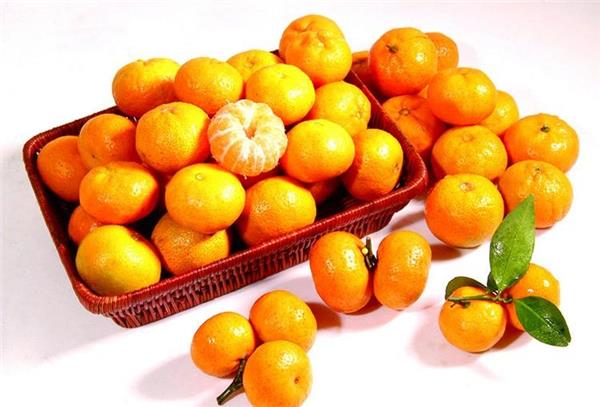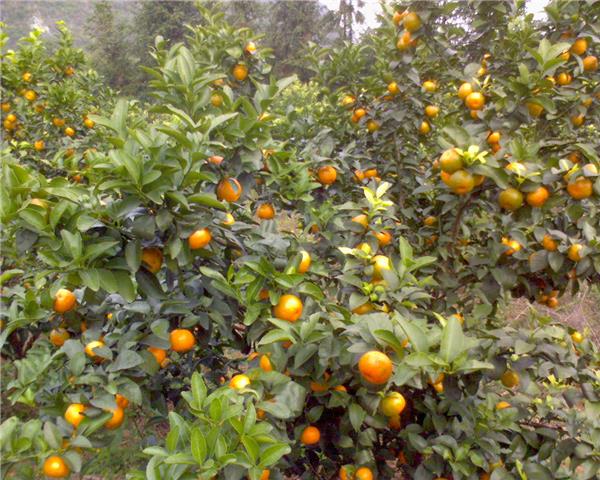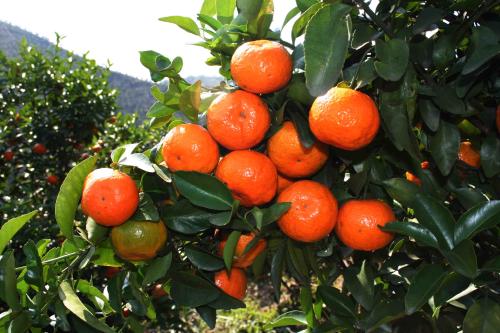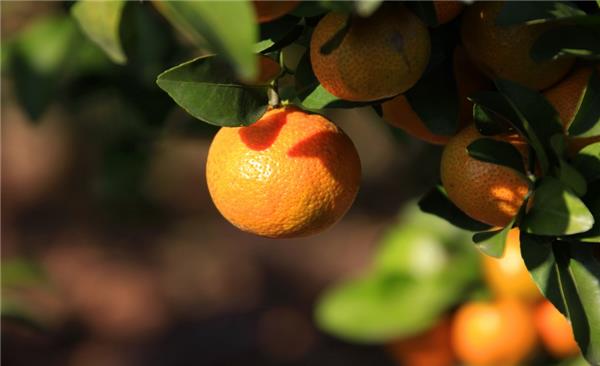How to prevent and control the yellowing of sugar orange trees in the culture method of sugar orange
Before learning how to cultivate sugar tangerines, I would like to remind you of a note: sugar oranges generally produce fruit cracking between August and September, with a natural fruit cracking rate of 10%. Therefore, in order to reduce this probability, we must be careful in breeding.

The Culture method of Sugar Citrus
Site selection: sugar orange, like other citrus varieties, has strong stress resistance, rough growth, and lax requirements on soil and environment. It can be planted in paddy field, hillside land and dry land. However, in order to achieve early fruiting, high yield and stable yield, it is best to choose the plot with rich soil organic matter, loose and deep soil layer, convenient drainage and irrigation, and soil PH value (pH) of 5.5 Mel 6.5.
Soil preparation: when planting on mountain slopes and dry land, the pit should be 0.8 × 0.8 meters wide and 0.6 meters deep. Fill the topsoil into the pit and apply sufficient basic fertilizer, such as chicken shit, soil fertilizer, etc., and fill the soil 30 centimeters above the ground.
Irrigation: from July to August during the summer drought, in case of soil drought, irrigation should be used to fight drought. First wet the tree crown with a sprayer, then irrigate it, and cover the ground with crop straw and weeds. In this way, the tree plate can keep the soil moisture uniform, enhance the water storage and water retention capacity of the orchard, so as to reduce the evaporation of water and reduce fruit cracking.

Fertilization: do not fertilize immediately after planting, so as to avoid root damage and waste of fertilizer. Generally speaking, the plant begins to root 15 days after planting, and rotten water and fertilizer can be applied one month later, based on the principle of frequent and thin application. In the future, we should master the principle of one shoot and two fertilizers: fertilize once when the new shoots grow and begin to mature, and then fertilize again when the new shoots begin to sprout after the new shoots are ripe, so the cycle.
Middle ploughing: in the early stage of drought, shallow ploughing of 8-12 cm in the tree plate and 15-25 m deep ploughing between rows should be carried out in time after rainfall to prevent the imbalance of soil moisture, which can prevent the fruit from absorbing too much water and causing the inner diameter to expand, resulting in fruit cracking.
Fruit thinning: generally in July, small fruit, deformed fruit, disease and insect fruit will be removed to ensure the growth of normal fruit and reduce fruit cracking. The cracked fruit should be kept on the tree and should not be removed and evaporated through the crack to maintain the relative balance between soil moisture and tree moisture and avoid new fruit cracking.

How to prevent and control the yellowing of sugar orange trees
1. Attach importance to the application of trace elements: the growth and development of orange trees need magnesium, boron, zinc and other trace elements. Zinc deficiency can easily lead to yellowing, shrinking and bunching of leaves. Lack of magnesium can easily lead to leaf thinning, leaf yellowing or mottled yellowing.
two。 Pay attention to the nutritional supply of excess fruit trees: orange trees hang fruit over the bearing capacity, and the demand for fertilizer and water exceeds the root supply capacity of orange trees, and the trees will gradually weaken and appear yellowing trees. For this kind of trees, it is best to remove the deformed fruit, fine fruit, super-large fruit and top fruit in the early stage of young fruit expansion, strengthen the management of fertilizer and water, pay attention to early nutrition supply, and adopt measures such as picking fruit in batches and applying flower-promoting fertilizer before harvest.
3. Attention should be paid to the removal of the residual film at the grafting interface of newly planted trees: the residual film at the grafting interface of orange trees will cause obstruction of the sieve guide tube and difficulties in nutrient transport, resulting in the yellowing phenomenon of orange trees gradually. the following measures should be taken: for mild yellowing, cut vertically at the interface. Moderate yellowing quickly bridged the upper part of the interface to change the rootstock or planted 3-4 seedlings around the original tree for bridging, using seedling roots to supply replenishment; for severe yellowing, dig out the original tree to replant new seedlings.

It should be noted that the diseases and insect pests of tangerines are relatively serious, and more gardeners and drugs are used to grow tangerines than other fruit trees, so it is necessary to prevent and cure them as soon as possible. if the prevention and control is not timely, it will cause the growth of seedlings to stagnate.
Related
- Wuhan Hospital Iron Tree Blooming Result Was Instantly Frightened by the Gardener Master
- Which variety of camellia is the most fragrant and best? Which one do you like best?
- What is the small blue coat, the breeding methods and matters needing attention of the succulent plant
- Dormancy time and maintenance management of succulent plants during dormancy
- Minas succulent how to raise, Minas succulent plant pictures
- What are the varieties of winter succulent plants
- How to raise succulent plants in twelve rolls? let's take a look at some experience of breeding twelve rolls.
- Attention should be paid to water control for succulent plants during dormant period (winter and summer)
- Watering experience of twelve rolls of succulent plants
- Techniques for fertilizing succulent plants. An article will let you know how to fertilize succulent plants.



